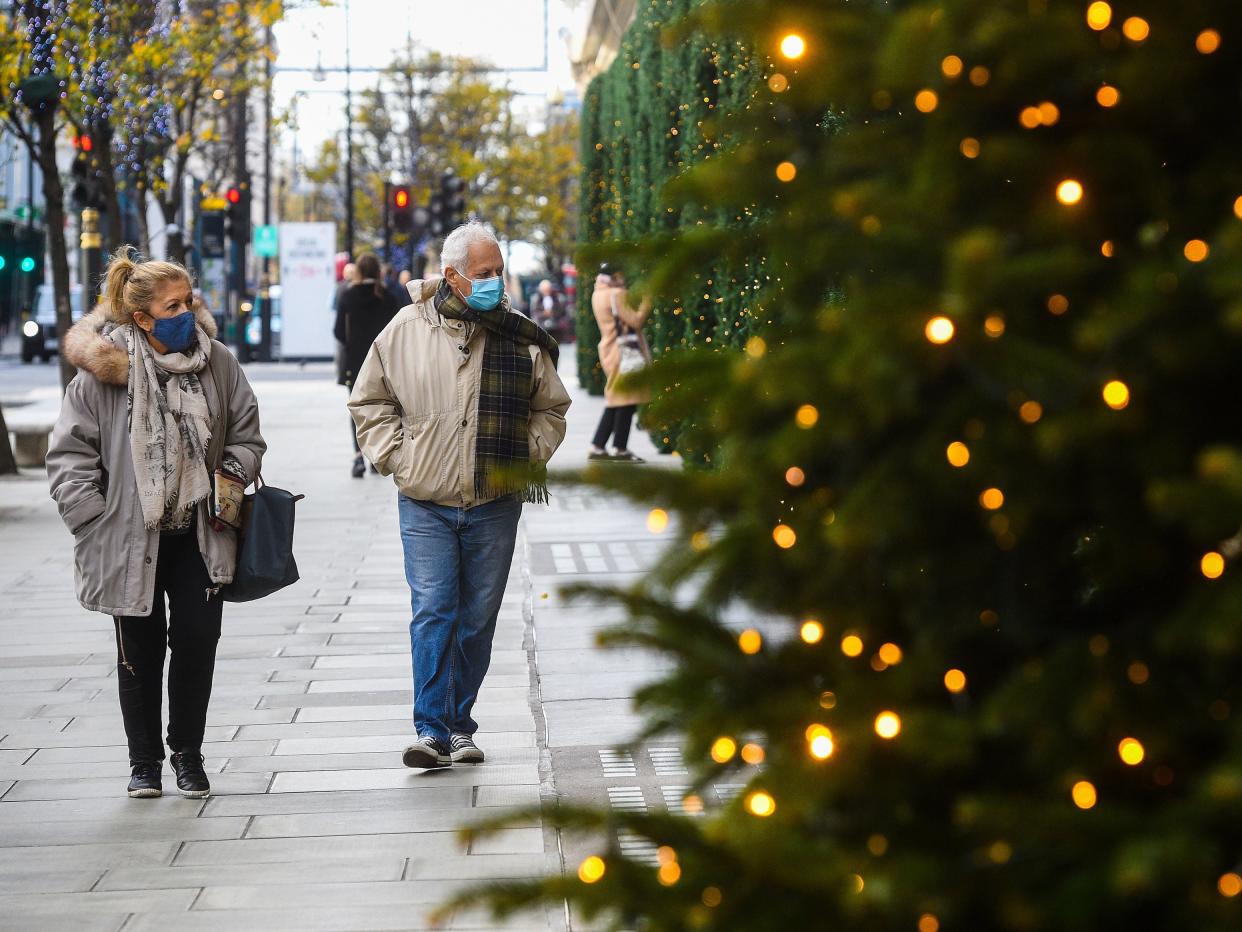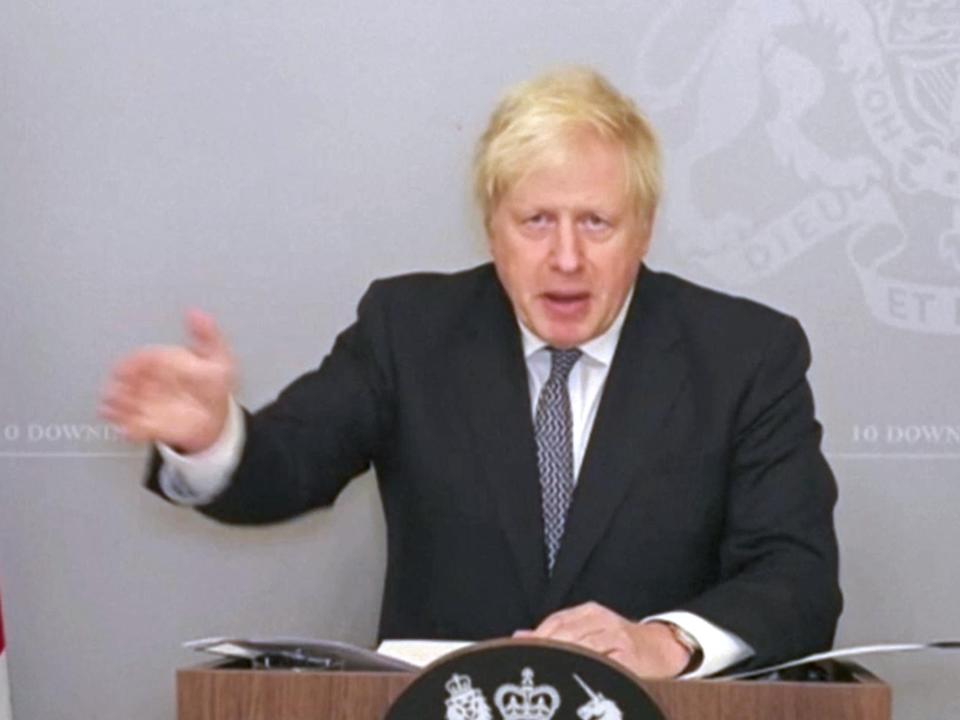Lockdown tier predictions - which areas are likely to be in Tier 1, Tier 2 and Tier 3

Boris Johnson is expected to announce which tiers each part of England will fall into once the current coronavirus lockdown ends
(Kirsty O’Connor/PA)Health Secretary Matt Hancock is expected to reveal on Thursday which tiers each part of England will fall into once the current coronavirus lockdown ends on 2 December.
Mr Hancock is expected to make the announcement in an 11.30am statement to the House of Commons.
Under the government’s tier system, each area is split into medium risk (tier 1), high (tier 2) and very high (tier 3) and given a respective set of social distancing rules to follow.
However, each set of restrictions is expected to be tougher this time - and there has been speculation about whether a fourth tier might be needed.
How will the tiers be decided? Will more areas be in the higher tiers?
Prime Minister Boris Johnson has admitted more regions will fall “at least temporarily” into the highest levels of restrictions than before the current lockdown was imposed on 5 November.
According to transport secretary Grant Shapps, the government will decide which tier each region is placed in based on "the number of cases" in each area, but particularly the numbers of people aged over 60 testing positive for the virus.
Read more: Tier 1 lockdown rules: What are the new restrictions for places under ‘medium’ alert
Mr Shapps told BBC Breakfast that although half the country could be placed in the strictest tier 3 alert level, this will still allow for more freedoms than the national lockdown currently in place for England.
He said: "I think it is the case that we do need to be a bit tighter on the tiers - tier 3 in more places is a strong possibility - but there's still a difference between that and what we're doing now.
"For example, in terms of the number of people that can meet outside in a public place, and a number of other things.”
Dr Mike Tildesley, a member of the Scientific Pandemic Influenza Group on Modelling (SPI-M) which advises the government, said he expected a lot of areas of England to emerge from lockdown into the highest tier.
He told the BBC this was because there was “fairly good evidence” showing tier 3 is “probably sufficient” to take the reproduction rate - or R number - below 1, but that this wasn’t the case for the lower tiers.
Dr Tildesley noted there is usually a lag in seeing the effect of any control policies on the rate of infection, and said he expected that a fortnight after the current lockdown in England ends there may be more movement in the tiers.
"It may be initially we might see slightly more severe tiers but then when we start to see the effect of the lockdown, 1-2 weeks after the lockdown finishes on 2 December, we might see some regions stepwise dropping down the tiers,” he said.
The prime minister also said the use of the tougher tiers coupled with rapid turnaround tests to drive the R rate below one should make it “possible for areas to move down the (tier) scale to lower levels of restrictions”.
Read more: Tier 2 lockdown rules: What are the new restrictions for areas under ‘high’ alert
Will there be a fourth tier?
Government scientific advisers have warned tier 1 measures alone are not enough to prevent the rapid growth of the virus and that a fourth tier may be needed in areas where tier 3 restrictions are not enough.
The Scientific Advisory Group for Emergencies (Sage) said some models suggested a modest (approximately 10 per cent) reduction in the R value when upgrading from tier 1 to 2.
They said tier 2 could be enough to reduce R below 1 in some places, but this has not yet been observed and would only be the case if R was just slightly above 1 before tier 2 was implemented.

The experts concluded moving from tier 1 to tier 2 would, in most cases, only slow growth of the virus rather than reverse it.
A separate Scientific Pandemic Influenza Group on Modelling, Operational sub-group (SPI-M-O) statement dated 11 November suggested a "tier 4" may be required in areas where tier 3 restrictions are not reducing numbers.
What are the latest regional figures?
The latest figures for the week ending 18 November show Covid-19 rates are beginning to fall across most parts of England.
In only two of the nine regions are a majority of areas recording a week-on-week rise: London and south-east England.
Given it can take up to two weeks for Covid-19 symptoms to appear, and further time for somebody to be tested and the result to be processed, more data is needed to be certain about how and where case rates are falling.
But the latest figures suggest the numbers are heading in the right direction, though crucially not in all parts of England.
Read more: Tier 3 lockdown rules: What are the new restrictions for ‘high alert’ areas
South East:
Analysis by PA news agency of Public Health England data for the week ending 18 November shows the South East now has the highest rates in England – with the rate rising in 34 out of 67 local authority areas in the region.
Swale tops the list, with a rate of 631.7 cases per 100,000 people, up from 425.8.
Thanet also appears in England's top five rates, where the number is currently 515.1, up from 460.8.
Read more: The new lockdown rules for Christmas and December
London:
Along with the South East, London is one of only two regions where a majority of areas have recorded a rise in the latest figures.
Of the 32 areas in London, 20 showed an increase, the biggest jumps being Havering (up from 309.4 to 386.0), Enfield (up from 175.6 to 230.4) and Redbridge (up from 249.0 to 300.4).
Havering also has the highest rate in London.
Despite the rise, Britain’s capital is widely expected to go into tier 2 once lockdown lifts, according to reporting from PA Media.
Yorkshire and the Humber:
Rates are falling in almost every area of Yorkshire and the Humber - a turnaround from last week, when most areas were recording a rise.
In the latest figures, just three out of 21 areas showed an increase: Craven, North Lincolnshire and Selby. North Lincolnshire recorded the biggest week-on-week jump in rates - but this was only a small rise, from 412.1 to 448.1.
North West:
Rates are up in only three of the 39 areas in northwest England: Carlisle, Hyndburn and South Lakeland.
Hyndburn saw the biggest rise, from 382.5 to 487.4 - this is also the highest rate in the region.
It is unclear what tier Liverpool will enter. However, Liverpool City Region Mayor Steve Rotheram has said he hopes the area, which was the first to enter the highest tier last time, will not return to Tier 3 restrictions.
“The progress we've made since we were put in Tier 3 is remarkable - we've gone from having two areas with infection rates of about 750 per 100k to 180 across the city region,” he said.
Follow live: Tiers for England to be announced as daily deaths near 700
North East:
Every one of the 12 local authority areas in the North East recorded a fall in rates in the latest figures. The biggest drop was in Gateshead, down from 468.2 to 320.7.
East Midlands:
Case rates are up in only three of the 40 local authority areas in the East Midlands, all in the south of the region: Harborough, South Northamptonshire and Wellingborough.
But rates are still very high in some parts of the East Midlands. East Lindsey is the highest in the region, where the rate is currently 515.8, down very slightly from 517.9.
West Midlands:
Just five of the 30 local authority areas in the West Midlands recorded a rise in the latest figures: East Staffordshire, Herefordshire, Newcastle-under-Lyme, Nuneaton and Bedworth, and Wolverhampton.
Of these, Herefordshire recorded the biggest jump, up slightly from 153.0 to 165.5.
South West:
Bristol continues to have the highest rate in southwest England, but the rate has fallen, down from 485.6 to 434.4.
A total of 20 of the 29 local authority areas in the region are now recording a drop.
Eastern England:
Seven of the 10 lowest rates in England are in eastern England, including the lowest of them all: Mid Suffolk, where the rate has fallen from 76.0 to 56.8.
A total of 27 of the 45 local authority areas recorded a fall in the latest figures.
Additional reporting by PA

 Yahoo News
Yahoo News 
